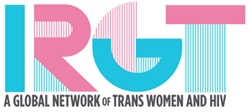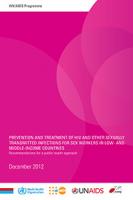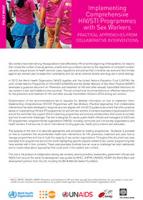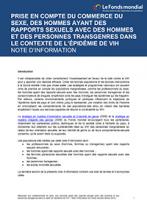What is the global burden of HIV among sex workers? How do sex worker HIV burdens compare to the general population? How does this vary by region?
How does the policy and social context shape sex workers’ HIV risk across geographic settings? How does this context influence the provision and coverage of HIV services?
To what extent can comprehensive HIV prevention at-scale among sex workers modify HIV transmission dynamics among sex workers and the general population?
What are the most cost-effective HIV prevention, treatment, and care interventions in the context of sex work? What combinations of services are most cost-effective?
Given this evidence, what are the implications for allocative efficiency in HIV prevention programs?
How does violence against sex workers affect their health and human rights and HIV transmission dynamics among sex workers and the general population across settings?
What has been the role of sex worker leadership in promoting the human rights of and reducing the burden of and risks for HIV infection among sex workers across contexts?
Key population category: Sex Workers
Prevention and Treatment of HIV and other Sexually Transmitted Infections for Sex Workers in Low- and Middle-income Countries: Recommendations for a Public Health Approach

The objective of this document is to provide technical recommendations on effective interventions for the prevention and treatment of HIV and other STIs among sex workers and their clients. The guidelines are designed for use by national public health officials and managers of HIV/AIDS and STI programmes, nongovernmental organizations including community and civil society organizations, and health workers. Regions and countries are encouraged to adapt these guidelines to support acceptable services for sex workers taking into account the epidemiological and social context. These guidelines may also be of interest to international funding agencies, the scientific media, health policy-makers and advocates.
Consultation of Sex Workers (PICO Questions) and Report

‘SWIT’ – Implementing Comprehensive HIV/STI Programs with Sex Workers (Policy Brief)

The full-text document is also available.
Prise en compte du commerce du sexe, des hommes ayant des rapports sexuels avec des hommes et des personnes transgenres dans le contexte de l’épidémie de vih





